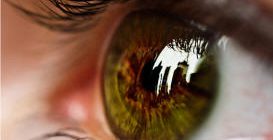 Photos from open sources of
Photos from open sources of
Loktak Lake is the largest in the northeast India’s freshwater. Its area is 35 by 13 kilometers.
This amazing place is famous for its unique floating islands. phumdi. Many of these islets of soil vegetation and humus, have a round or square shape, and scientists still cannot explain the nature of such a phenomenon.
 A photo from open sources
A photo from open sources
Phumdi have a dense, spongy surface and look like trampolines. Like icebergs, they are hidden mostly under water, and on the surface only their tops are visible. In summer, the water level in Loktak decreases, and the roots of the islands sometimes reach the bottom, absorbing from it nutrients.
 A photo from open sources
A photo from open sources
The lake and thousands of phumdi on it are incredibly important for local residents. Indians use water for irrigation and drinking, and fishermen About 1,500 tons of fish are caught here annually. On the floating the islets are the huts of local residents, boat moorings and even one school.
 A photo from open sources
A photo from open sources
Phumdi is also a place where at least 200 grow plant species, among which about 400 animal species live, including including a rare Indian python. On the largest island the only floating national park on the planet it is called “Keibul Lamiao.” It is inhabited by a “dancing” deer endangered sangai. It is noteworthy that the hooves of this beast are specially adapted to the spongy surface phumdi.
The Keibul Lamiao has an area of approximately 40 square kilometers. The park was created exclusively to preserve the sangai, which once almost extinct – several individuals remained. Now deer live not only in floating meadows, but also in a strip of solid land, dividing the park in two.
 A photo from open sources
A photo from open sources
In the 80s of the last century near Loktak built dam, due to which the water level in the lake remains high almost all year round. Phumdi because of this can not fall rooted to the bottom and get nutrients from there. It leads to the fact that the islands are slowly but irreversibly thinning and break apart. It’s a pity…
Water India Islands






